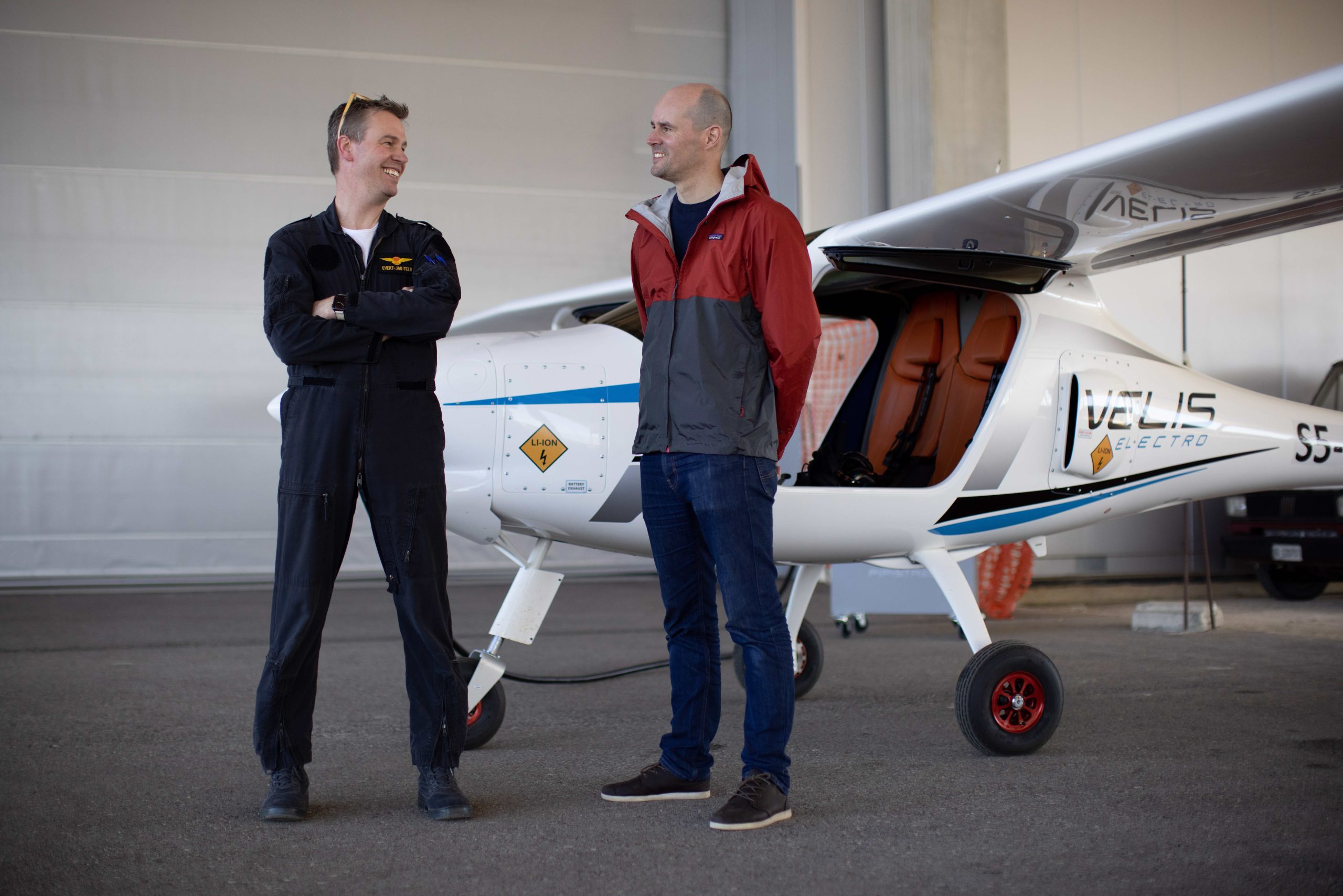The two aircraft have arrived. From May 1, you can learn to fly electric planes at Teuge Airport. A small range and short flights are no problems for a flight school.
Evert-Jan Feld and Matthijs Collard are going to teach the Dutch to fly electrically. (Photo: E-Flight Academy)
Industrial designer Matthijs Collard was ready for a new challenge. He has had his own design agency Hike One since 2008, but he decided to follow his own path rather than that of his clients. He was looking for something challenging to do with sustainability over the next twenty years. His choice fell on electric flying in the form of an electric flight school, the E-Flight Academy, which he founded together with flight instructor Evert-Jan Feld.
They purchased two electric aircraft, the Pipistrel Velis Electro, and opened their doors at Teuge Airport. The first students have started their theory lessons, and as of May 1, it will be busy, expects Collard. He says that from two weeks ago, flying lessons are allowed again under the corona protocol.
Video: E-Flight Academy
Limitations
The Pipistrel Velis Electro is a small plane from Slovenia, according to aviation expert Joris Melkert (AE Faculty). According to the handbook he consulted, 50 minutes of flight time are the maximum limit for a very calm flight. If you go faster, 30 minutes is a more realistic duration. The range of 68 kilometres is also very limited. From Teuge (near Apeldoorn) you can just make it to Lelystad airport, but Schiphol, Rotterdam or Eindhoven are out of range.
For a training plane, the limited flight time and the small range are not a problem. The flight school plans trips between Teuge and Hilversum, where there is also a charging station. “A quick lunch and briefing while charging, and then back again.”
Collard does acknowledge that it is ‘fitting and appropriate’ to include the compulsory exercises into the flight hours, which are not actual hours. “More flights may be needed to fill the flying hours,” he expects. A Private Pilot License requires 45 flight hours. Most of that (37 hours) is done electrically, but for the last 8 hours the students fly in a fuel-powered aircraft. That allows them to make the mandatory longer trip and gain enough experience for the SEP (Single Engine Piston) certification.
Perspectives
Electric planes are pre-eminently suitable as training planes, Collard believes. He expects other flight schools to start flying electric in the coming years as well. This will help reduce their CO2 emissions, which is a step they are increasingly under pressure to take. Collard thinks that the batteries are rapidly improving (now up to 500 charging cycles) and that other and larger electric planes will soon appear on the market. Flying with them will not be much cheaper for the time being. In terms of price, the e-Flight Academy is at an average level (€14,900 for a licence), according to its own statement.
Another way to make flying lessons more sustainable is to replace some of the flights with hours on a certified simulator. According to instructor Evert-Jan Feld, a simulator is excellent for training in extreme conditions. The instructor can stop, rewind, discuss and resume the action at any time. “That is not yet the standard in general aviation, but that is what we want,” says Collard. Students from the InHolland University of Applied Sciences are busy developing a simulator for the Pipistrel.
Do you have a question or comment about this article?
j.w.wassink@tudelft.nl


Comments are closed.